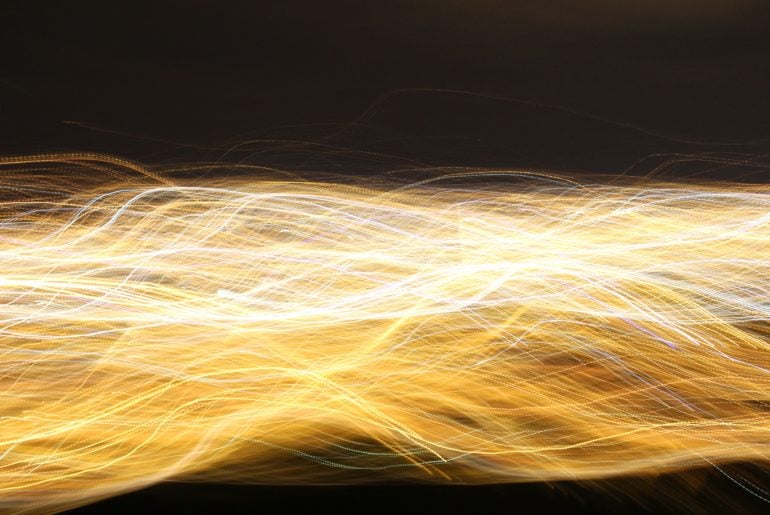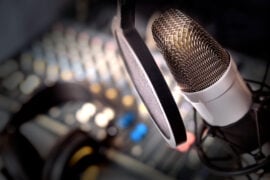AI systems can be named inventors under the Patents Act and Patents Regulations says the Australian Federal Court in Justice Beach’s decision in Thaler v. Commissioner of Patents [2021] FCA 879 issued on 30 July 2021. This is the first time that an Australian Court has considered this issue, and an appeal is expected. If upheld on appeal, the recognition of non-human inventors will have significant commercial and legal implications for the use of AI in research & development.
The Australian decision is the first to recognise non-humans as inventors. Dr. Thaler has also applied for counterpart patents in other jurisdictions, including the United States, Europe, the United Kingdom and South Africa, with his patent applications having been rejected in all of these jurisdictions but South Africa.
Key takeaways
- Justice Beach came to this decision based on a combination of statutory interpretation and policy considerations, as discussed in depth below.
- Given the significance of the decision, we expect that there will be an appeal. If the decision is upheld on appeal, this will lead to a new “class” of patents, being ones for inventions created by non-humans. This development is of huge commercial importance, given the increasingly pervasive use of AI in research & development across many industries. Justice Beach specifically called out the importance of AI to research & development in the pharmaceutical sector.
- If upheld on appeal, the case will also impact other areas of patent law, both substantively and procedurally. For example:
- can the notional skilled addressee be or include non-humans
- should the test for patentability of computer-implemented methods be revisited
- how you can lead evidence from the inventor in a patent enforcement case when the inventor is not human
- Critically, even if AI systems can be named as inventors going forward, Australian patentees may be prevented from claiming priority rights from Australian applications in other jurisdictions where non-human inventors are not recognised.
Background
- The decision was an appeal from a determination made by the Commissioner of Patents.
- Dr. Stephen Thaler filed a patent application for an invention that was autonomously generated by an AI system named “DABUS”. During the formalities examination, the Deputy Commissioner found that the application did not comply with reg 3.2C(2)(aa) of the Patents Regulations, which requires that the patent applicant provide the name of the inventor of the invention to which the application relates. The Deputy Commissioner held that an AI system could not be an inventor, and the application’s deficiencies were incapable of remedy.
- DABUS was a form of neuro-computing that allowed a machine to generate new concepts which are encoded as chained associative memories within artificial neural networks. DABUS was trained by a combination of supervised and unsupervised learning. The Court accepted that Dr. Thaler was the owner of DABUS’ source code and the machine on which it operated.
- The alleged invention was the output of DABUS’ processes, which included various products and methods in relation to containers, devices and methods for attracting enhanced attention using convex and concave fractal elements. Dr. Thaler claimed that DABUS, as an AI machine, was capable of constituting an “inventor” for the purposes of the Patents Act. The Court upheld Dr. Thaler’s appeal.
The Court’s decision
Justice Beach reached his decision based on a combination of statutory interpretation and policy considerations.
- The table below summarises, by topic, the Commissioner’s key statutory interpretation arguments against AI systems being recognised as inventors and Justice Beach’s decision in response to each of these arguments.
- From a policy perspective, Justice Beach’s decision was informed by the increasingly central importance of AI in research & development. His Honour elaborated at length on the use of AI in pharmaceutical research, referring to the Joint Institute for Innovation Policy in its September 2020 final report on “Trends and Developments in Artificial Intelligence: Challenges to the Intellectual Property Rights Framework” prepared for the European Commission. His Honour also considered that his interpretation of “inventor” to encompass non-humans was consistent with the express object of the Patents Act, and that the concept of “inventor” should be seen in an analogously flexible and evolutionary way, similar to the High Court’s approach in D’Arcy v. Myriad Genetics with respect to the widening conception of “manner of manufacture”, which is a necessary feature of the development of patent law in the 20th and 21st century as scientific discoveries inspire new technologies.
| Commissioner’s arguments | Court’s findings |
| Ordinary meaning of inventor | |
| The ordinary meaning of “inventor” is inherently human. The ordinary meaning of “inventor” does not signify a non-human actor.The ordinary signification of “inventor” entailing a human person gives effect to the s 2A object in the Patents Act, which is to provide a patent system that “balances over time the interests of producers, owners and users of technology and the public”.Treatment of “inventor” as a human actor mirrors the position in copyright, in which it is established that those intellectual property rights originate by the application of human intellectual effort. | As the word “inventor” is not defined in the Act or the Regulations, it has its ordinary meaning. In this respect, the word “inventor” is an agent noun. The agent can be a person or a thing. In this case, if an AI system is the agent which invents, it can be described as an “inventor”.None of the dictionary definitions relied upon by the Commissioner precluded a non-human actor from being an inventor.It is consistent with the object of the Act to construe the term “inventor” in a manner that promotes technological innovation and the publication and dissemination of such innovation by rewarding it, irrespective of whether the innovation is made by a human or not.Consistent with the object, computer inventorship would incentivise the development by computer scientists of creative machines, and also the development by others of the facilitation and use of the output of such machines, leading to new scientific advantages.There is no specific aspect of patent law, unlike copyright law involving the requirement for a human author or the existence of moral rights, that would drive a construction of the Act as excluding non-human inventors. Non-human persons feature in the Patents Act e.g. as applicants. |
| The concept of inventorship in the Patents Act and Patents Regulations | |
| The word “inventor” in reg 3.2C(2)(aa) of the Patents Regulations has the same meaning as it does in s 15(1)(a) of the Patents Act, being the person(s) to whom the patent can be granted.The primary person to whom the patent will be granted is the inventor. All other people derive title to the patent, and the invention claimed therein, via the inventor.An inventor cannot mean anything different from the person who is responsible for making the invention, namely, the person who makes or devises the process or product. Inventor in s 15(1)(a) refers to the person who makes or devises the invention, wherever the invention may be made. | There is no specific provision in the Act that expressly refutes the proposition that an AI system can be an inventor, or requires a human to be an inventor. The Patents Act is fundamentally concerned with inventive step, which requires a comparison in the prior art base as it existed before the priority date of the claim. It does not require a human inventor, nor is it concerned with the mental state of an inventor.The Patents Act requires a legal person to be an applicant, which in this case was Dr. Thaler. There is no requirement in the Patents Act that requires an inventor to be a legal person. |
| The operation of s 15 of the Patents Act (who may be granted a patent?) | |
| s 15(1)(a) [the inventor] – an AI system cannot own a patent, so s 15(1)(a) with respect to granting a patent to an inventor does not apply; nor can an AI system assign a patent under s 15(1)(b). | s 15(1)(a) demonstrates that the concept of a “person” is different to an “inventor”. It is a fallacy to argue from s 15(1)(a) that a non-human/non-person, cannot be an inventor. It could be an inventor, but it could not be granted a patent. |
| s 15(1)(b) [a prospective assignee] – necessarily presupposes an “inventor”, whether as the origin of the invention giving rise to title under the general law prior to grant or upon grant, consistently with ss 15(1)(a) and (c). In the present case, there is no relevant juridical act, and no requisite legal relationship beyond possession, that establishes that upon grant Dr. Thaler would be entitled to an assignment. | s 15(1)(b) does not require the existence of an inventor, or an earlier vesting of title in an inventor (whether or not they are human). It only requires an applicant to be entitled to have a patent assigned to them once granted.An entitlement and assignment could arise by agreement or by conduct or informally. No instrument need be involved. Such an entitlement could also arise by operation of law. Dr. Thaler could potentially fall within s 15(1)(b) as:he is the owner, programmer and operative of DABUS.as the owner of the AI system that made the invention, the invention in a sense was made for him on established principles of property law. ownership of the work of an AI system is analogous to ownership of the progeny of animals or food and crops produced by the labour and expense of the occupier of the land. |
| s 15(1)(c) [person who derives title from the inventor or prospective assignee] – it cannot be said that Dr. Thaler “derives title to the invention from the inventor”. s 15(1)(c) requires the existence of a title that moves from the inventor to the other person. | The concept of derivation is broad and is not limited to assignments or any transfer of title as such.The language of s 15(1)(c) recognises that the rights of a person who derives title to the invention from an inventor extend beyond assignments to encompass other means by which an interest may be conferred. Title can be derived from the inventor notwithstanding that it originally vests other than in the inventor. Dr. Thaler would fall within s 15(1)(c) because he has derived title to the invention from the inventor, DABUS by reason of:his possession of DABUS,his ownership of the copyright in DABUS’ source code, andhis ownership and possession of the computer on which it resides. |



